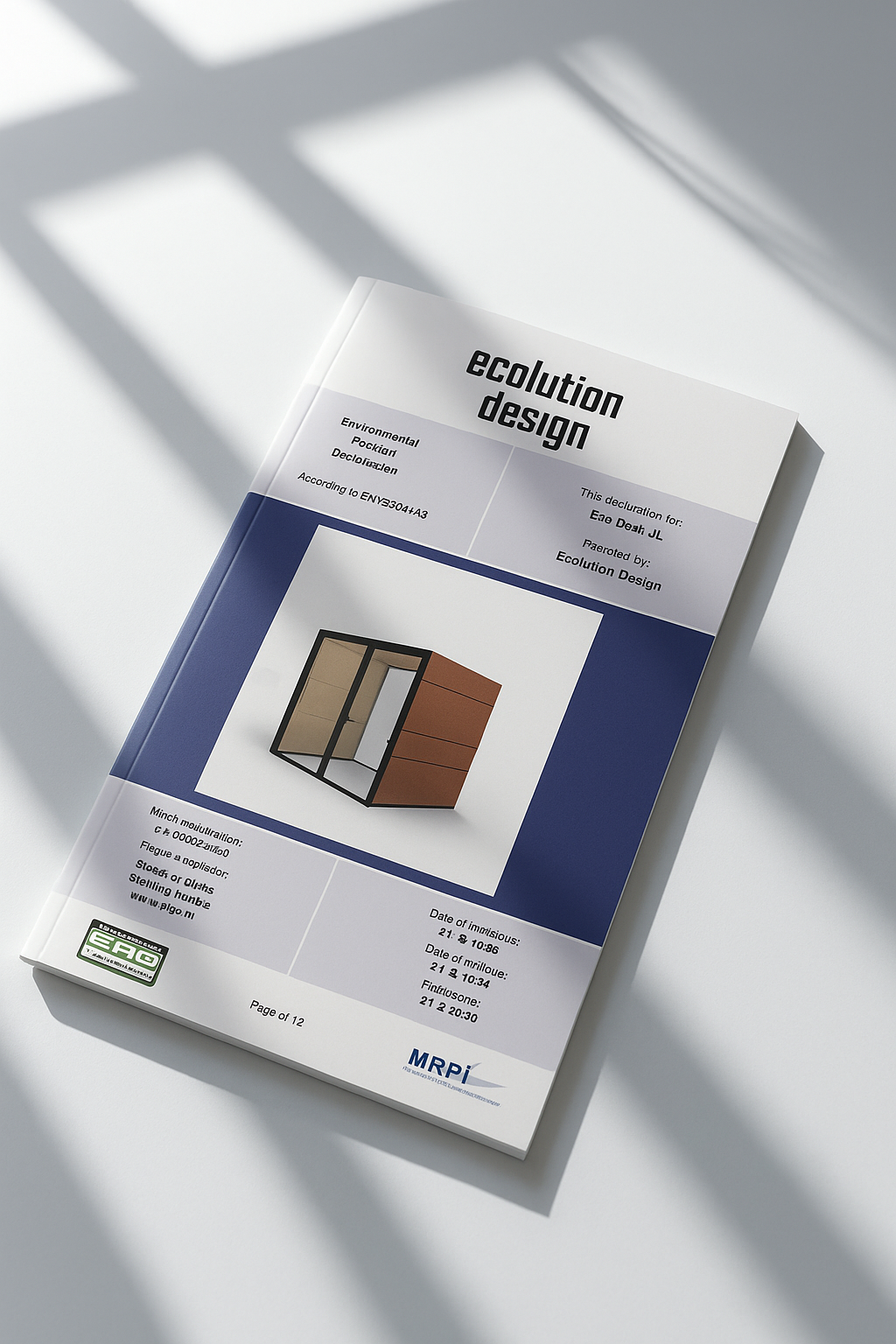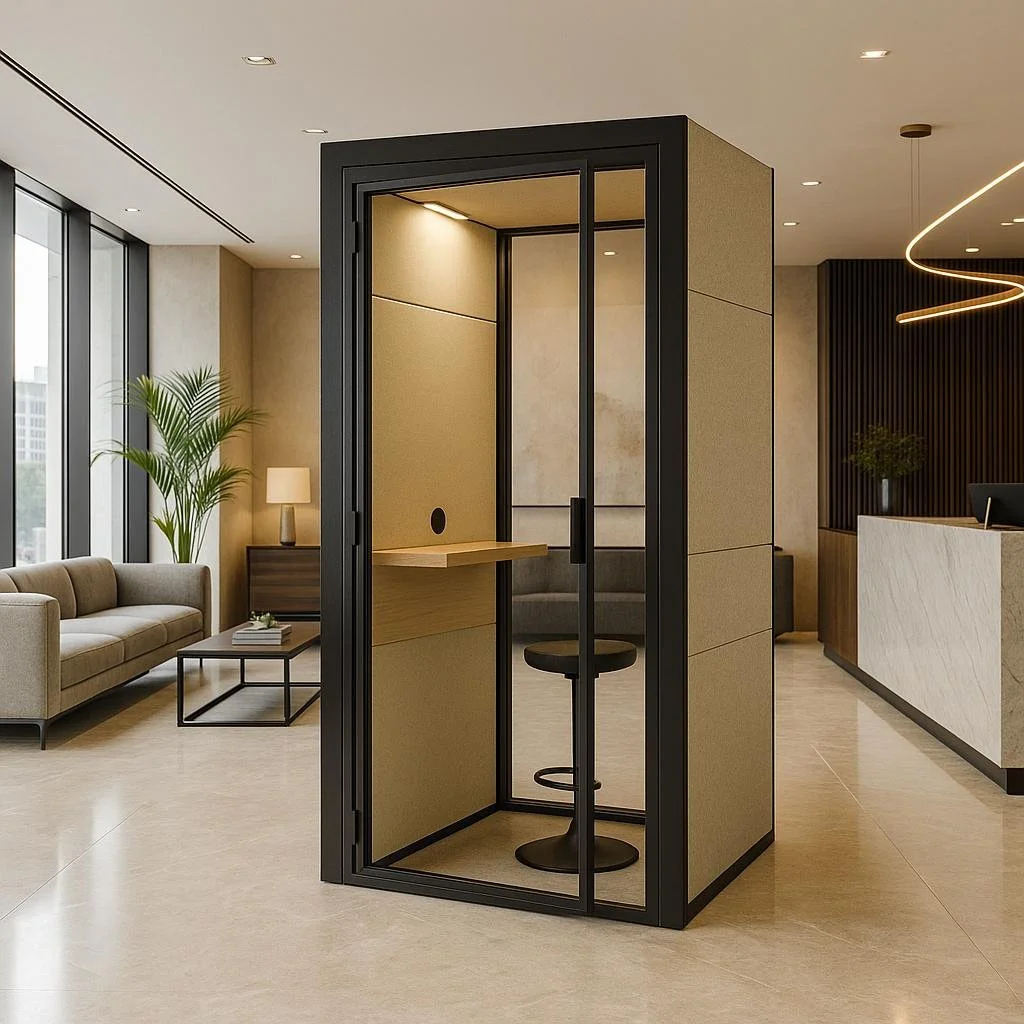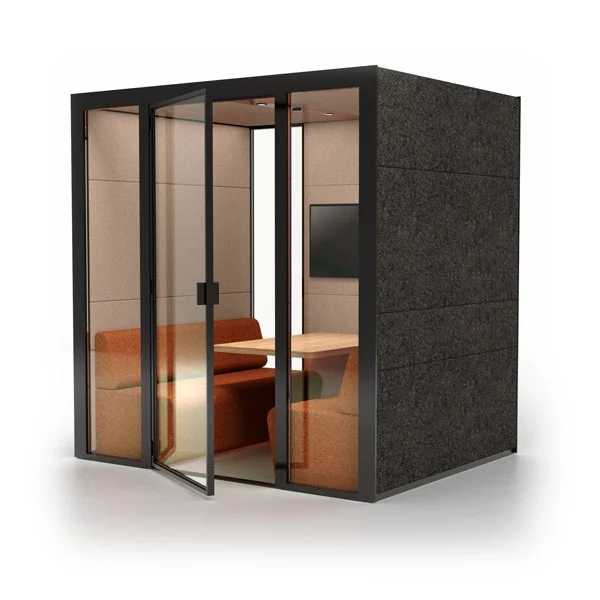What Is an Environmental Product Declaration (EPD) and Why It Matters for Sustainable Design
Sustainability today demands more than promises it requires proof. That is where an Environmental Product Declaration (EPD) comes in. An EPD provides verified, transparent data about a product’s environmental footprint across its entire life cycle. From material sourcing and production to transport, use, and recycling, it gives a complete picture of how a product interacts with the environment.
At Ecolution Design, we believe measurable sustainability should be the standard, not the exception. Our approach to product development is grounded in evidence-based design, supported by EPDs for seven EPDs, covering our entire range. This allows architects, designers, and clients to compare products on facts, ensuring every choice contributes to a lower environmental impact.
EPDs are rapidly becoming the new benchmark for sustainable manufacturing across industries especially in architecture, construction, and workplace design. They combine transparency, accountability, and innovation, giving companies a credible way to communicate sustainability performance.
What Is an Environmental Product Declaration (EPD)?
An Environmental Product Declaration (EPD) is a verified document that shows the environmental impact of a product throughout its entire life cycle. It follows international standards, including ISO 14025 and EN 15804, which ensure the data is reliable, comparable, and independently verified.
Think of an EPD as a passport for sustainability. It presents the results of a Life Cycle Assessment (LCA) a scientific method that measures how a product affects the environment from raw material extraction, manufacturing, and transport to use, recycling, and end of life.
Each EPD provides clear numerical data on key impact categories and indicators such as:
Global Warming Potential (GWP) – the product’s carbon footprint.
Abiotic Depletion Potential for fossil resources (ADP-fossil) - the depletion of fossil resources
Resource use – the amount of energy and materials required.
Waste generation, secondary materials and recycling potential – how much waste is being generated, reused materials as input and material that can be recycled after use.Because EPDs follow the same rules (known as Product Category Rules, or PCRs), they make it possible to compare products on measurable performance instead of vague sustainability claims.
Because all EPDs follow the same rules (known as Product Category Rules, or PCRs), they make it possible to compare products on measurable performance instead of vague sustainability claims.
At Ecolution Design, seven Pods in our collection have a registered and verified EPD. This commitment allows us and our clients to make decisions grounded in data rather than perception.
How an EPD Is Created
Creating an Environmental Product Declaration (EPD) is a detailed process built on scientific measurement and third-party verification. Every EPD begins with a Life Cycle Assessment (LCA) the foundation that quantifies a product’s full environmental impact.
An LCA follows a clear, standardized sequence:
Data Collection – All materials, energy inputs, transport distances, and production processes are recorded.
Life Cycle Inventory (LCI) – This data is structured to map out the product’s complete journey, from raw material extraction to end-of-life.
Impact Assessment – Using ISO 14040 and ISO 14044 standards, environmental impacts are calculated for each stage.
Verification and Registration – Independent experts review the data and methodology. Only after verification is the EPD officially registered and published in recognized databases such as ECO Platform, MRPI, or EPD International.
This process ensures transparency and comparability. It prevents unverified claims and allows stakeholders from architects to procurement specialists to trust the numbers they see.
At Ecolution Design, we use this process for seven Pod models, ensuring that environmental data is measured consistently. This includes all stages of the life cycle, from sourcing locally made materials to designing for high recyclability and minimal waste.
Life Cycle Stages Inside an EPD
Every Environmental Product Declaration (EPD) breaks down a product’s environmental impact into specific life cycle stages. These stages capture everything that happens from the first material extraction to the product’s end of life. Following EN15804+A2, the life cycle is divided into modules labeled A through D:
A1–A3: Product Stage – covers raw material extraction, transport to production, and manufacturing.
A4–A5: Construction Stage – includes transportation to site and installation impacts.
B: Use Stage – considers maintenance, repair, and operational use.
C1–C4: End-of-Life Stage – includes disassembly, transport, waste processing, and disposal.
D: Reuse and Recycling Benefits – shows the potential environmental savings when materials are recycled or reused.
These modules help identify where the largest impacts occur. In many cases, the A1–A3 phase raw materials and manufacturing accounts for the majority of emissions.
At Ecolution Design, this insight shapes our sustainability strategy. We prioritize materials with high recycled content, reduce transport distances through local sourcing, and design Pods for easy disassembly and reuse. This approach not only minimizes emissions in the early stages but can also maximize the benefits captured in Module D where recycling and reuse lower the total footprint even further.
Understanding EPD Results and Indicators
An Environmental Product Declaration (EPD) translates complex life cycle data into measurable results. These results are presented through standardized environmental impacts and indicators that reveal where and how a product impacts the planet.
Important indicators include:
Global Warming Potential (GWP): Measures total CO₂ emissions throughout the product’s life cycle.
Abiotic Depletion Potential (ADP-Fossil): Reflects fossil fuel consumption.
Water deprivation potential (WDP): Measuring how much your product contributes to global water scarcity.
Use of Secondary Materials (SM): Indicates the percentage of recycled or reused material used in production.
Recycling Potential (MFR): Shows how much of the product can be recycled at the end of its life.
Waste Disposed (WD): Reveals total waste generated across all stages.
When these indicators are viewed together, they provide a complete picture of the product’s environmental footprint. For example, a lower GWP means a smaller carbon footprint, while higher SM and MFR values indicate strong circular performance.
At Ecolution Design, our EPD results show that our Pods achieve:
More than twice the reduction in CO₂ emissions than comparable products.
The highest share of secondary (recycled) materials used in production, due to our smart material choices.
A third less total waste generated across the entire product life cycle on average.
These verified results reflect more than compliance, they demonstrate measurable progress toward a circular, low-carbon future.
Why EPDs Matter for Sustainable Design
In modern architecture and interior design, sustainability is no longer optional it’s a requirement. Companies, architects, and clients need reliable ways to measure and compare environmental performance. Environmental Product Declarations (EPDs) provide exactly that: transparent, data-driven insight into how a product affects the planet.
EPDs make it possible to:
Compare materials and products on verified environmental data, not marketing claims.
Support certification systems like BREEAM, LEED, and WELL, which increasingly require EPD-backed evidence.
Guide procurement and design decisions, helping organizations meet sustainability targets and reporting standards.
Build trust with clients and stakeholders through transparency and verification.
For Ecolution Design, EPDs are more than compliance tools, they shape the way we innovate. Each Pod is designed with sustainability as a measurable goal. Our use of locally sourced materials, modular construction, and recyclable components reduces emissions and waste from the start. The result is a product that performs well acoustically and aesthetically, while minimizing its carbon footprint throughout its life cycle.
By integrating EPD data into the design process, we help our partners create work environments that align with the values of transparency, accountability, and long-term environmental responsibility.
Whatever it is, the way you tell your story online can make all the difference.
Where to Find and Verify EPDs
To ensure transparency and trust, all verified Environmental Product Declarations (EPDs) are published through recognized and publicly accessible databases. These platforms allow architects, designers, and clients to review environmental data, compare products, and make informed decisions based on verified facts.
Some of the most respected EPD databases include:
ECO Platform – the European network that harmonizes EPD verification for construction and furniture products.
MRPI (Milieu Relevante Product Informatie) – the official Dutch database for environmental product data.
EPD International (The International EPD System) – a global platform offering verified declarations across all product categories.
Each listing provides detailed life cycle data, verification status, and reference standards such as ISO 14025 and EN 15804.
All Ecolution Design EPDs are available through these trusted databases and on our Sustainability page. This open access ensures our clients and partners can view the complete environmental profile of every Pod from material composition to CO₂ emissions and recycling potential.
By making this data public, we not only demonstrate transparency but also encourage a more informed and responsible approach to product selection and workspace design.
EPDs as the Future Standard for Accountability
Environmental Product Declarations are reshaping how we define and measure sustainability. They replace assumptions with verified data and turn environmental responsibility into a measurable standard. For architects, designers, and clients, EPDs are becoming the benchmark for selecting materials and products that genuinely reduce environmental impact.
At Ecolution Design, this philosophy drives everything we create. Our Pods combine function, comfort, and verified sustainability. Through third-party verified EPDs, we can demonstrate how every choice from locally sourced materials to modular, recyclable construction contributes to lower emissions and longer product lifespans.
The future of sustainable design depends on measurable proof. By publishing EPDs for our entire range, we make it possible to compare products on facts, not promises. This approach ensures that environmental performance is transparent, consistent, and continually improving.
Transparent. Measurable. Proven.
That’s how Ecolution Design defines sustainability and why EPDs are central to how we build a more responsible future.




